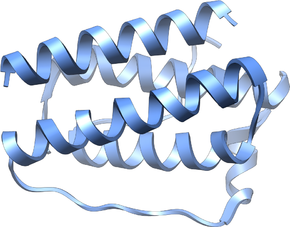Pathophysiology of obesity

Pathophysiology of obesity is the study of disordered physiological processes that cause, result from, or are otherwise associated with obesity. A number of possible pathophysiological mechanisms have been identified which may contribute in the development and maintenance of obesity.[1]
Research
This field of research had been almost unapproached until the
Appetite
Leptin and ghrelin are considered to be complementary in their influence on appetite, with ghrelin produced by the stomach modulating short-term appetitive control (i.e. to eat when the stomach is empty and to stop when the stomach is stretched). Leptin is produced by adipose tissue to signal fat storage reserves in the body, and mediates long-term appetitive controls (i.e. to eat more when fat storages are low and less when fat storages are high). Although administration of leptin may be effective in a small subset of obese individuals who are leptin-deficient, most obese individuals are thought to be leptin resistant and have been found to have high levels of leptin.[4] This resistance is thought to explain in part why administration of leptin has not been shown to be effective in suppressing appetite in most obese people.[1]
While leptin and ghrelin are produced peripherally, they control appetite through their actions on the
Arcuate nucleus
The arcuate nucleus contains two distinct groups of
Immune system
Obesity has been associated with an inflammatory state, which is chronic and low-grade inflammation, known as meta-inflammation.[6][7] Meta-inflammation is subclinical meaning that while there is an increase in circulating pro-inflammatory factors, no clinical signs of inflammation, heat, pain, and redness, are seen with meta-inflammation.[8] Based on the immune system cells involved, both innate and adaptive immunity are involved in meta-inflammation.[8]
There are different types of obesity depending on where fat cells are stored. Abdominal obesity, excess fat cell accumulation in adipose tissue of the abdomen, is associated more strongly with meta-inflammation.[9]
Evolutionarily, adipose tissue has been shown to function as an immune organ.[8] The immune cells located in adipose tissue are important for maintaining metabolic homeostasis. With obesity, the immune cells important for maintaining metabolic homeostasis are suppressed because immune cell function and immune cell amount are affected by excess fat accumulation in adipose tissue.[7][8] Excess fat accumulation can lead to insulin resistance, and insulin resistance has been linked to meta-inflammation.[8] With insulin resistance, there is an increase in macrophages, mast cells, neutrophils, T lymphocytes, and B lymphocytes, and a decrease in eosinophils and some T lymphocytes.[8]
Obesity has also been shown to induce
